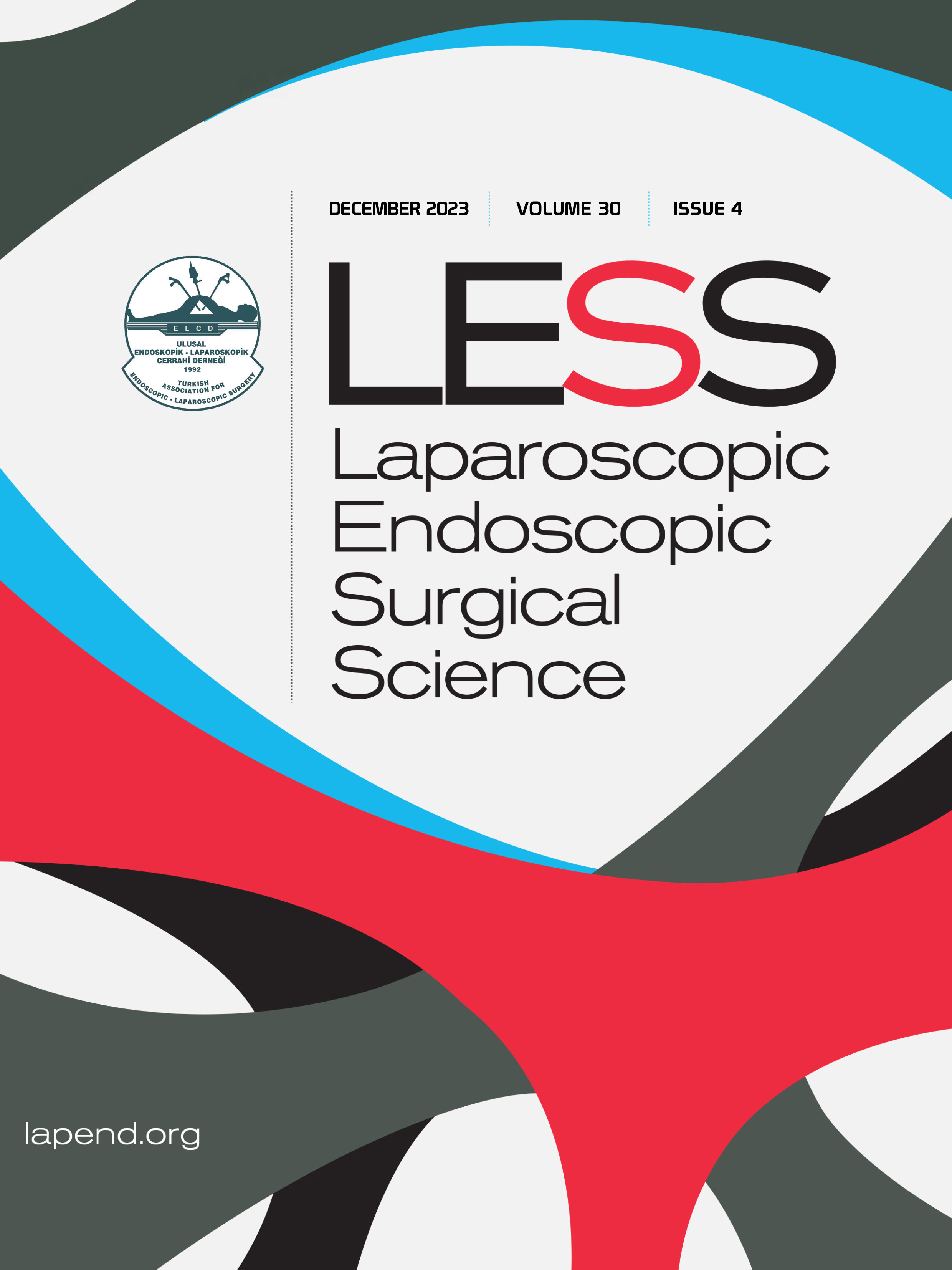Volume: 23 Issue: 3 - 2016
| EDITORIAL | |
| 1. | Obesity and metabolic surgery Mervyn Deitel doi: 10.14744/less.2014.08370 Pages 53 - 55 Abstract | |
| REVIEW | |
| 2. | Definitions of obesity and current indications for obesity surgery Aziz Sümer doi: 10.14744/less.2014.99608 Pages 56 - 62 Rate of obesity has increased all over the world. Indications and contraindications for obesity surgery have not changed much; however, metabolic consequences of bariatric surgery have expanded some indications for obesity surgery in patients with comorbidities. The advancement and frequent usage of laparoscopic surgery have made bariatric surgical operations easier. |
| 3. | Physiologic changes in obesity and patient preparation for bariatric surgery Tevfik Tolga Şahin doi: 10.14744/less.2014.33042 Pages 63 - 71 Morbid obesity is pandemic. Regardless of the socioeconomic status of the population, incidence of obesity is increasing worldwide. Bariatric surgery provides the only stable means of surgical cure for obesity. Number of bariatric procedures performed is increasing around the world. Morbidly obese patients are physiologically prone to complications after such major surgery. In the present review, the mechanisms of obesity and altered organ systems were discussed, and a brief summary of key points in preoperative patient evaluation was explained. |
| 4. | Anesthesia for the surgical procedures of the morbidly obese Almila Gülsün Pamuk, Ayşe Ayyıldız doi: 10.14744/less.2014.22931 Pages 72 - 77 Surgery for the morbidly obese is no longer a novelty. Understanding the basic mechanisms of the pathophysiology of morbid obesity and taking simple precautions while preparing these patients for surgery will help reduce complications. This review outlined preoperative, perioperative, and postoperative management of the morbidly obese patient in line with the current knowledge. Airway management, drug choices, changes in respiratory, circulatory, urinary, and metabolic systems were discussed. Some early and long-term changes in the morbidly obese, like gastroesophageal reflux and vitamin deficiencies were also summarized to aid in subsequent operations and management. |
| 5. | Laparoscopic adjustable gastric banding: Technique and results Oktay Banlı, Hasan Altun, Ergin Aslan, Mesut Sipahi, Hasan Börekçi, Kasım Çağlayan doi: 10.14744/less.2014.14633 Pages 78 - 82 Prevalence of obesity is increasing worldwide and bariatric surgery is the most effective surgical therapy for obesity. Laparoscopic adjustable gastric banding (LABG) is one of the most common bariatric procedures in the world. Popularity is high among surgeons due to shorter learning curve and lower early complication rate. There are 2 insertion techniques for LABG: the perigastric technique and pars flaccida technique. Pars flaccida approach evolved due to high complication rate of perigastric technique. Most common complications of LABG are pouch dilation, band slippage, band migration, and port complications. Although LABG is an effective weight loss procedure, weight loss is slower compared with other bariatric procedures, such as gastric sleeve or bypass. It results in significant improvement in co-morbidities, including diabetes, hypertension, hyperlipidemia, and sleep apnea, and significant improvement in quality of life is seen. Despite the high safety profile of LABG in short term, it has a high complication rate in long term. Patients who are candidates for LABG must understand that intensive follow-up, compliance, and motivation are necessary for good results and outcomes. |
| 6. | Laparoscopic gastric plication: Technique and results Murat Üstün doi: 10.14744/less.2014.76486 Pages 83 - 88 Laparoscopic gastric plication is a relatively new restrictive procedure. Promising early period results have been reported. When compared with other restrictive methods, excess weight loss at an acceptable level can be obtained at an early stage. Aim of this study was to discuss the technique and results obtained from 45 cases. |
| 7. | Laparoscopic sleeve gastrectomy: Technique and results Halil Coşkun, Erkan Yardımcı doi: 10.14744/less.2014.96967 Pages 89 - 95 Laparoscopic sleeve gastrectomy (LSG) has gained popularity as stand-alone procedure. The objective of this study was to describe the surgical technique and evaluate the outcomes of LSG published in the literature. Twenty-six studies with 1 to 5 years of follow-up after LSG were analyzed. Of the 26 studies, 22 reported patient gender (n=2765) and 69.1% of the patients were women. Mean age of the patients was 41.05 years (22 studies; n=2483 patients). Mean preoperative body mass index in all twenty-four studies was 48.2 kg/m2 (range: 37.2-65.3 kg/m2). Overall mean percentage of excess weight loss after LSG reported in 17 studies was 57.7%. Postoperative complication rate ranged from 0% to 15.3%. Leak rate ranged from 0.7% to 5.1%, and mortality rate ranged from 0% to 1.4%. Eleven studies reported remission rate of postoperative co-morbidity data with follow-up period of 12 to 60 months. Existing data have identified that LSG is comparable to other accepted bariatric procedures, but long-term data is limited. |
| CASE REPORT | |
| 8. | First experience of laparoscopic adjustable banded sleeve gastrectomy (LabSG) for an extremely obese patient Igor E. Khatkov, Rg Askerkhanov, Ij Feidorov, Na Bodunova doi: 10.14744/less.2014.87597 Pages 96 - 99 Patients with body mass index (BMI) over 60 kg/m2 are considered super-super obese. This patient group, as well as patients with extreme co-morbidities, creates challenging conditions for bariatric surgery. Each step of laparoscopy, including insufflation, trocar placement, dissection, and performing complex procedures like bypass becomes technically more difficult. Furthermore, there is increased risk of postoperative complications, morbidity, and mortality in these groups. Presently described is adjustable gastric banded sleeve gastrectomy (LabSG) performed in 38-year-old female with BMI of 84.3 kg/m2. Following an uneventful postoperative course, she lost 100 kg in 12-month period and BMI was reduced to 52.7 kg/m2. LabSG seems to be a safe and effective alternative for super-super obese patients at experienced centers. |
| HOW TO | |
| 9. | Laparoscopic sleeve gastrectomy: Pitfalls and techniques to prevent complications M. Mahir Özmen, Michel Gagner doi: 10.14744/less.2014.65365 Pages 100 - 103 Abstract | |















